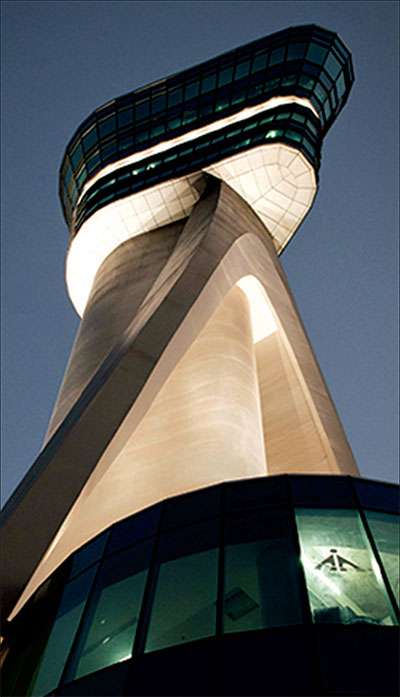Managing air traffic will be challenging with growth in civil aviation
Yunus Dar

The International Air Transport Association (IATA) released performance figures for 2018 showing that global air connectivity continues to become better and more efficient. According to the IATA World Air Transport Statistics (2019 WATS), globally, 4.4 billion passengers flew in 2018. It represented an increase of 6.9 per cent over the previous year figures. With seat capacity up to 81.9 per cent being filled, this was a record efficiency for the airlines in the said year.
IATA’s Director General and CEO said the airlines were connecting more people and places than ever before. Accessibility has increased with increase in prosperity and global living standards. The Asia-Pacific carried the largest number of passengers worldwide as aviation markets in India and China continue to grow. Air travel demand, according to industry estimates, is slated to double by 2037, with China, US and India leading the way. The emerging and developing economies will account for about 60 per cent of all passenger traffic by 2040, according to estimates. The data from IATA indicates a geographical reshuffling of world air traffic to the East, on the back of robust economic growth in the Asian countries. India itself is slated to take the third place after the US, surpassing the UK by 2024.
Notwithstanding severe infrastructure constraints, the air traffic continues to grow in India exponentially. The current rate of growth and modernisation of the airports will not be sufficient to meet the upcoming demand, something the industry analysts anonymously agree upon. More than other infrastructure, the upgradation and modernisation of Air Traffic Management (ATM) will be crucial for India if it plans to capitalise on the booming aviation industry. The government of India has over the years taken many steps to modernise the ATM infrastructure in the country, however, much more will need to be done to truly keep pace with high passenger traffic.
India recently inaugurated Air Traffic Flow Management – Central Command Centre, in a bid to centralise air traffic flow management system. The C-ATFM system is primarily meant to address the balancing of capacity against the demand to achieve optimum utilisation of major resources viz., airport, airspace and aircraft at every Indian airport where there is a capacity constraint. The system integrates flight data from various subsystems like ATC Automation System, flight updates and flight update messages. The system also displays weather information along with static information about airports, airspaces and air routes. C-ATFM processes the demand and capacity information and provides decision-making tools to the ATFM Flow Manager for collaborative decision making and to ensure regulated flow of traffic at each airport in India. The C-ATFM system is supported by 36 Flow Management Positions (FMP) at various airports including Delhi, Mumbai, Chennai, Kolkata, Bengaluru and Hyderabad among others. Eight defence airports are also part of the ATFM network which are provided with FMPs.
C-ATFM will make the ATM more efficient in India, which is facing a massive infrastructure constraint, by cutting down on flight delays as it synchronises aircraft movement with real time conditions. India has become the seventh country to implement such a system.
The Airports Authority of India (AAI) which handles the ATM in India, along with Indian Space Research Agency (ISRO) is working on new technologies to modernise India’s airspace management. The agency in May last year signed a Rs 945 crore deal with the US-based Harris Corporation for development of futuristic telecommunications infrastructure (FTI). The aim of FTI is to create a centralised and integrated system of communication to result in more air travel safety and capacity, performance and reliability of the ATM. The company in February this year completed renovations on the 12,000-square-foot, state-of-the-art facility in New Delhi that will house the network operations control centre for India’s nationwide aviation communications infrastructure. “The new facility exclusively serves the AAI’s FTI network as a centralised and integrated operations and security centre for all critical communications needs throughout the authority’s facilities across India. This dedicated, round-the-clock centre allows the staff to handle virtually all communications requirements, including automated problem reporting and real-time network status for AAI. The centre also provides 24/7 monitoring of network security, including analysis and threat response, so that AAI can focus on its core priority – managing India’s growing aviation needs,” the company said in a statement. Harris is contracted to upgrade network operations, enhance security, and improve the performance, reliability, availability and quality of India’s ATM network, while reducing telecommunications costs over the life of the programme.
The AAI this year also signed a technical assistance agreement with the global aerospace major Boeing to develop an air traffic management roadmap in India. The contract signed in June 2019 seeks to improve space utilisation and help maintain efficient aircraft operations across the country. The 18-month project for a comprehensive 10-year communication, navigation and surveillance/air traffic management (CNS/ATM) modernisation roadmap will be embarked on with a grant from the US Trade and Development Agency (USTDA). AAI in a statement said the implementation of modern technologies and global practices will allow the country to increase its airspace capacity significantly by improving communications, enabling flexible use of airspace and allowing the safe processing of additional flights using air navigation infrastructure for smoother and more efficient skies in India.
Boeing said it will analyse current technologies and processes to identify efficiency improvements that can be implemented while maintaining a practical and safe airspace system. As part of the project, Boeing will also work closely with the Directorate General of Civil Aviation (DGCA), airlines operating in India, airport operators and other airspace stakeholders like the US-India Aviation Cooperation Program (ACP).
You must be logged in to view this content.

